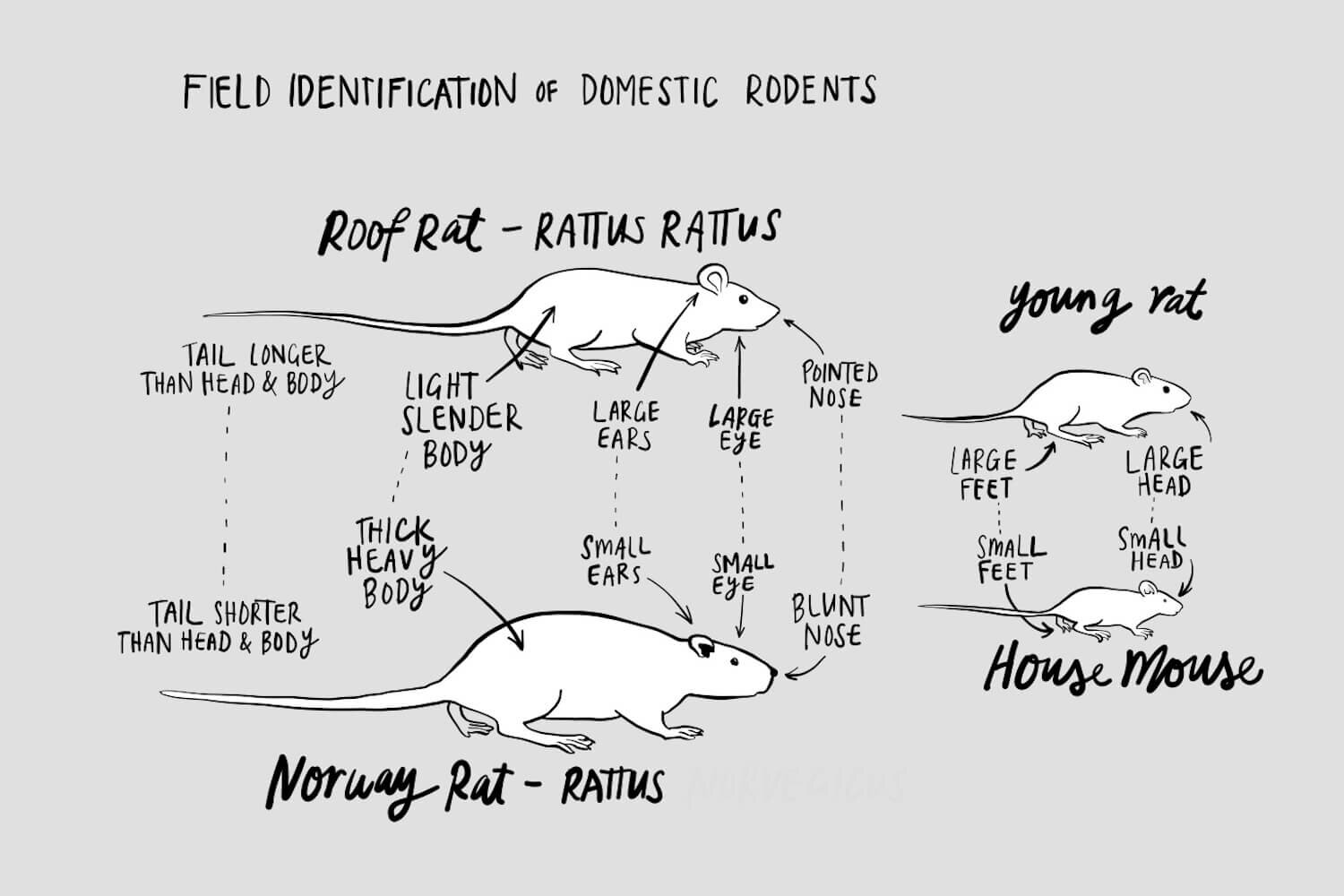Rat facts
Field identification of domestic rodents (Predator Free New Zealand Trust).
Rats are a major problem for New Zealand’s native wildlife and plants, threatening the long-term survival of many species.
They are omnivores, which means they have a very broad diet and will always find something to eat. Rats are known to predate on plants, invertebrates, birds and lizards.
Which rat is that?
There are three kinds of rat in New Zealand, all of which were brough here by humans.
Norway rat
Norway rats (Rattus norvegicus) arrived in New Zealand in the late 1700s on ships with early European settlers. They are most active at night and spend most of their time on the ground. Norway rats are often found around waterways. They are excellent swimmers and can cross water bodies up to 2.2 kilometres wide. These rats can enter homes through foundations — chewing timber and walls to gain access and digging burrows under the floor.
Norway rats are a significant threat for native species that live, roost or nest on the ground such as ground-nesting birds, especially around braided rivers and beaches. They also predate on large invertebrates and have caused the local and national extinction of several species.
Identification: Norway rats are the largest rat in New Zealand. They have small ears and a short, thick tail that is shorter than their body.
Also known as: common rat, brown rat, water rat, sewer rat, street rat.
Ship rat
Ship rats (Rattus rattus) came to New Zealand in the 1800s on ships with early European settlers. They are the most common species of rat in New Zealand and found throughout the country. Ship rats are excellent climbers and will get through holes and cracks in walls to live in the roof of buildings.
Ship rats are the biggest threat to native wildlife and plants. They are notorious for predating on bird eggs, chicks and adults on the nest and have caused the extinction of several native birds including the laughing owl, bush wren and South Island snipe. They also eat the fruit and seed of native plants, as well as invertebrates such as wētā, spiders and beetles.
Identification: Ship rats have a tail that is longer than their body and ears that cover the eyes when pressed forward.
Also known as: black rat, roof rat, house rat.
Kiore
Kiore (Rattus exulans) came to new Zealand with early Māori voyagers. They have since been out-competed by the more recent rat arrivals and are now limited to offshore islands and parts of Fiordland.
Identification: The kiore looks similar to the ship rat but is much smaller, with a tail that is shorter than its body.
Also known as: Polynesian rat, Pacific rat, little rat.
Got rats?
If things are going bump in the night, you may have rats in or around your home.
Rats are neophobic, which means they have a fear of novel stimuli and avoid new food or situations until they know it’s safe to eat. Just because you haven’t seen rats doesn’t mean they aren’t around!
Droppings
Rats will leave cylindrical droppings, particularly in places where they are feeding or nesting. These are dark and moist when fresh, but dry out and become crumbly over time.
Scratching noises
You’ll likely hear rats before you see them. If you hear scratching in the walls, behind cabines or in the roof — there may be a rodent settling in.
Gnaw marks and holes
Rats are notoriously destructive. Look for holes in your home with rough edges and wood shavings that look as though they have been gnawed at. You may also find food packets or rubbish bags with fresh holes in them.
Nests
Rats use soft material like shredded paper, fabric and dried plant matter to make their nests. Check warm, dry places like attics, under the house, and even in walls.
Tracks and footprints
Rats and mice often follow a set runway. If you suspect there are rats in a certain area, try putting a dusting of flour or baby powder on the ground overnight. If rats are active, you will see footprints in the powder.
Ammonia smell
You may notice a strong ammonia smell coming from hidden areas. This is likely the result of roden urine, which creates a very particular smell.
Pets
If you have pets, they may be particularly interested in certain areas around your home. Dogs in particular have an excellent sense of smell and may scratch or bark at areas where rodents have taken up residence.







